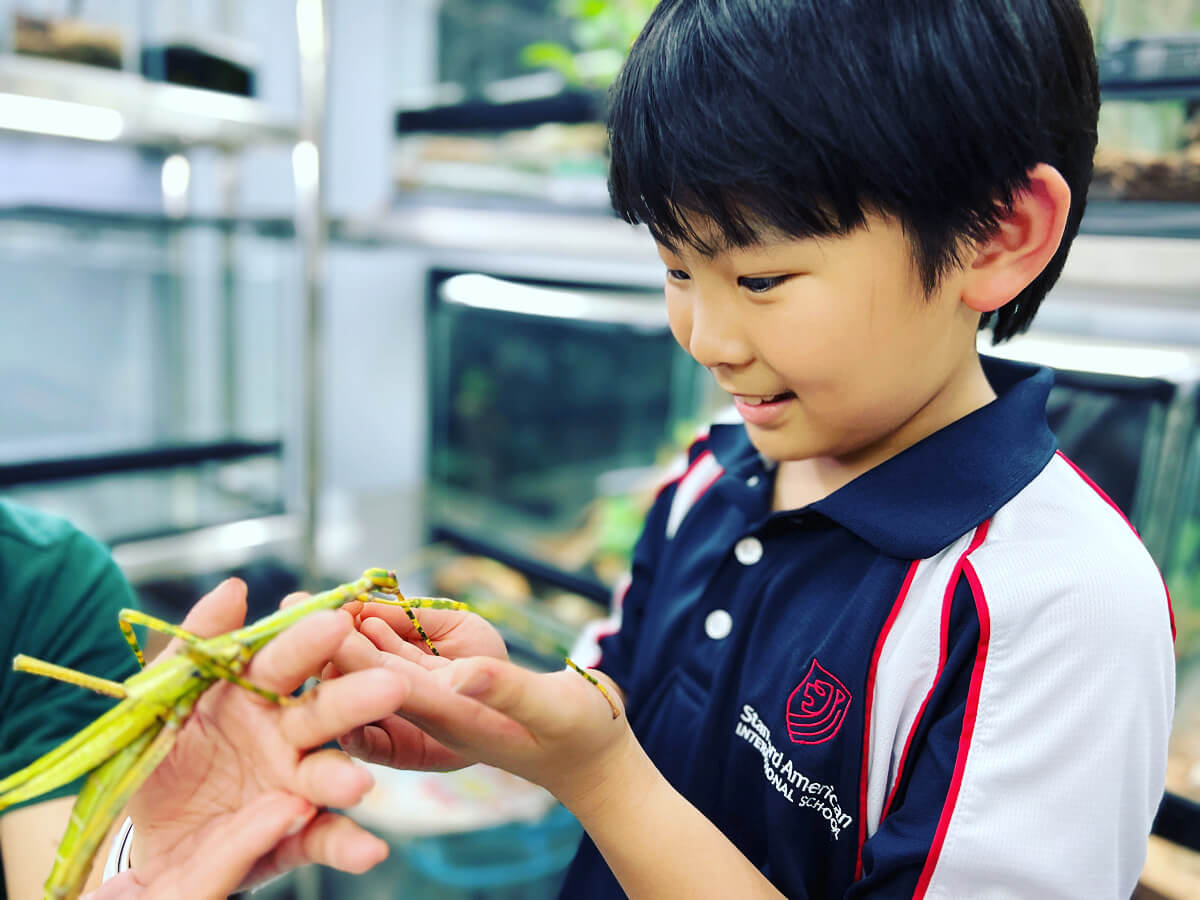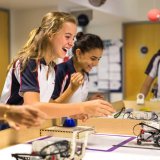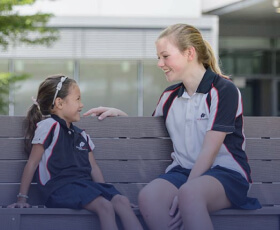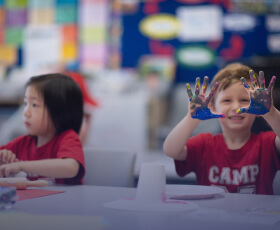Experiential learning can be summed up as “learning by doing.” While traditional teaching methods often focus on theory and memorization, experiential learning actively engages students through hands-on activities and reflective processes that connect real-life experiences with abstract concepts.
The Field Studies Program at Stamford American brings learning to life through a carefully structured, experiential program that spans Grades 5 to 12. Each year builds on the last, with clear grade-level learning objectives that strengthen students’ confidence, resilience, and cultural awareness.
Students participate in five- to seven-day trips across Southeast Asia, including destinations such as Thailand, Vietnam, Cambodia, and Nepal (for Grade 12 students). Singapore-based outdoor and community projects complement these experiences, ensuring that every Stamford American student develops a deep connection to nature, enhanced leadership skills, and a strong sense of agency.
Through these experiences, students explore their place in Southeast Asia and the broader world. By interacting with diverse cultures and perspectives, they graduate equipped to navigate challenges, nurture connections, and leave a lasting, positive impact wherever they go.
The benefits of experiential learning make it an ideal alternative for children who struggle with traditional, passive approaches. Naturally curious children, in particular, thrive in this environment, as it taps into their innate desire to explore. Let’s explore some specific ways this teaching style can benefit your child:
Summary of Contents:
Understanding the Advantages of Experiential Learning: Nine Ways Experiential Learning Helps Children Succeed
- Promotes Proaction and Leadership
- Develops Critical Thinking Skills
- Encourages Productive Collaboration
- Builds Emotional Intelligence
- Improves Knowledge Retention
- Boosts Self-Confidence
- Enhances Practical Real-World Problem Solving
- Develops Adaptability and Creativity
- Equips Children for Lifelong Learning
Understanding the Advantages of Experiential Learning
One of the primary advantages of experiential learning is that it aligns with the natural way curious children learn. Research shows that experiential learning positively impacts children’s academic performance, helping them grasp new concepts more effectively than through passive methods like reading. It also fosters greater engagement, encouraging children to take an active role in their own learning. Many experiential learning approaches involve collaboration with peers and community members, promoting the development of social skills. Most importantly, experiential learning bridges the gap between academic content and its practical application, helping children understand the real-world relevance of what they study in the classroom.
Nine Ways Experiential Learning Helps Children Succeed
1. Promotes Proaction and Leadership
Experiential learning stands in stark contrast to traditional rote instruction. Instead of being passive recipients of information, children become active participants in their own education. This approach often includes hands-on activities such as conducting experiments, interviews, and role-playing, which require children to engage beyond simply listening or taking notes. Over time, children exposed to this active learning style are more likely to take initiative and step outside their comfort zones, fostering leadership skills and proactive behavior.
2. Develops Critical Thinking Skills
Experiential learning connects theory with practice, encouraging students to question assumptions rather than accepting information at face value. This approach prompts them to analyze situations, evaluate options, and make informed decisions instead of simply following popular practices. As a result, learners develop stronger independent thinking and logical reasoning skills, helping them avoid groupthink and equipping them to become academic and professional trailblazers.
3. Encourages Productive Collaboration
Group activities in experiential learning environments offer children valuable opportunities to collaborate with others. While working together, children deepen their understanding of the subject matter and learn to navigate diverse perspectives. They may encounter new ideas or opposing viewpoints, much like in the real world. Through this process, they develop respect for different perspectives and hone essential communication skills, enabling them to work effectively and goal-oriented in team settings.
4. Builds Emotional Intelligence
Interactive and collaborative activities frequently encourage children to connect with their own emotions and those of others. Managing and reflecting on these emotions is key to developing empathy and self-awareness—both essential for social and emotional growth. With a stronger emotional foundation, learners are better equipped to succeed without sacrificing other important aspects of the human experience.
5. Improves Knowledge Retention
Studies show a strong correlation between hands-on experiences and improved information retention, particularly in subjects like science and mathematics. This is because experiential learning engages multiple senses and encourages learners to fully immerse themselves in understanding concepts. By linking academic content to real-world applications, this approach not only enhances motivation but also reinforces recall, helping students retain information more effectively.
6. Boosts Self-Confidence
Successfully completing challenging tasks fosters a sense of achievement, boosting children’s confidence in their abilities. This empowers them to take initiative, embrace new challenges, and tackle problems independently—all qualities essential for future leaders.
7. Enhances Practical Real-World Problem Solving
Experiential learning exposes children to situations they are likely to encounter in their professional lives. Whether collaborating with others or applying the scientific method to acquire new knowledge, these hands-on experiences help children build the confidence to solve real-world problems. As they learn to find practical solutions, they become better equipped to address challenges outside the classroom.
8. Develops Adaptability and Creativity
Experiential learning goes beyond teaching established practices—it encourages students to think creatively and explore alternative solutions. Even when learning conventional concepts, students are urged to investigate and question why they work, and whether other approaches are possible. This method often presents unexpected challenges that require adaptation and compromise, closely mimicking real-world conditions. As a result, children develop valuable strategies for overcoming adversity, fostering both adaptability and natural creativity.
9. Equips Children for Lifelong Learning
The proactive and reflective nature of experiential learning fosters a growth mindset that benefits children throughout their lives. This approach helps students understand that learning is not confined to the classroom but is an ongoing, self-driven journey. In a rapidly changing world, this mindset may be more valuable than any specific skill, as it encourages continuous adaptation and personal growth.
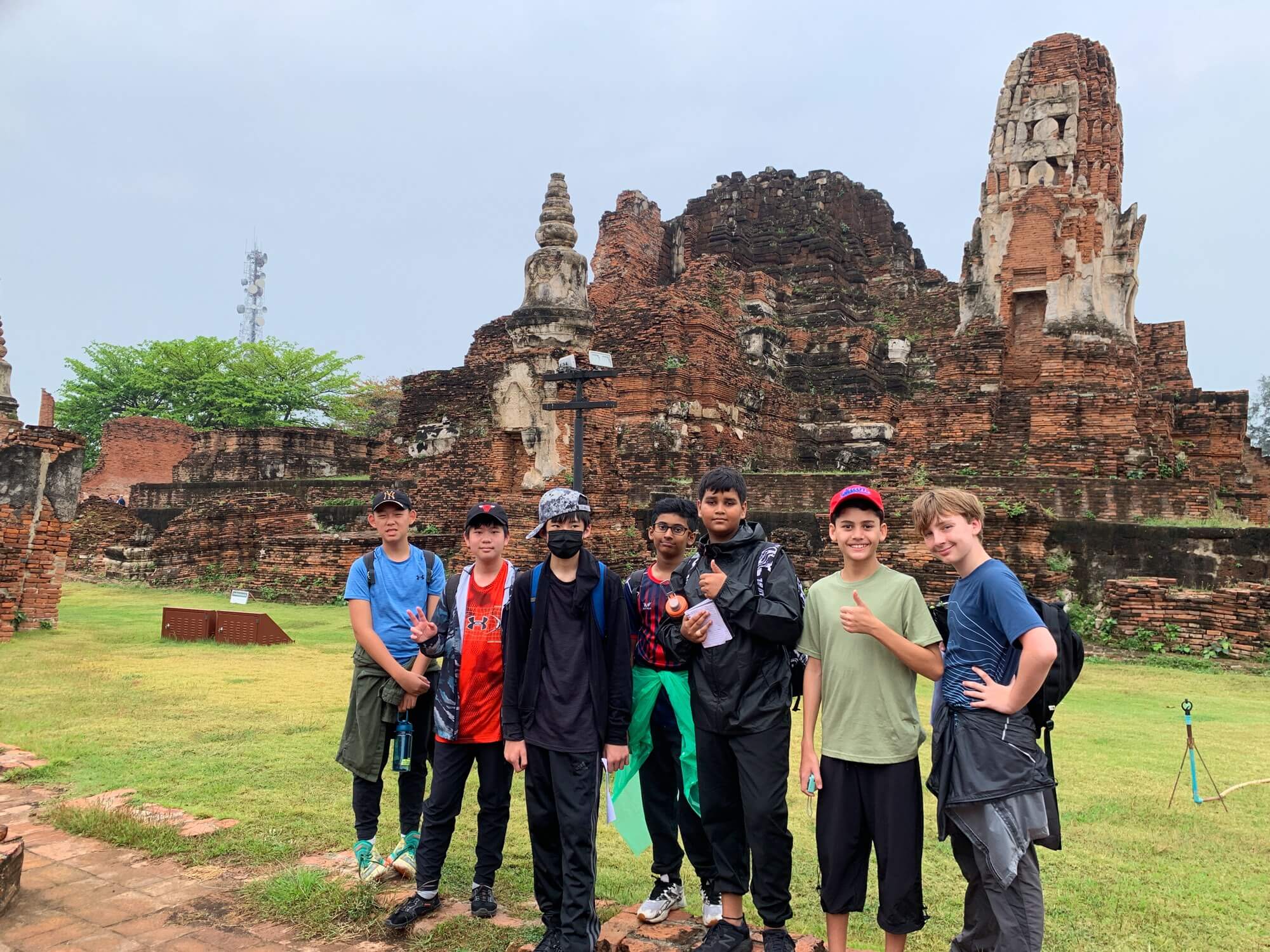
Stamford American Bridges the Gap Between Classroom and Real-World Learning
At Stamford American International School (SAIS), experiential learning is at the heart of education. Designed for curious and hands-on learners, Stamford’s programs deliver immersive, practical experiences that inspire exploration, critical thinking, and global awareness. By integrating the International Baccalaureate (IB) Programme continuum with U.S. Standards, Advanced Placement (AP), and Business and Technical Education Council (BTEC) qualifications, Stamford equips students with the skills to excel as proactive global citizens.
A standout element of Stamford’s curriculum is its Field Studies Program, which takes learning beyond the classroom walls. Through real-world challenges, students cultivate leadership, collaboration, problem-solving, and resilience. These transformative experiences empower them to become the changemakers of tomorrow, ready to leave a positive mark on the world.
A Glimpse into Outdoor Education: Cambodia Expedition
From October 23 to 28, Grade 10 students embarked on an unforgettable journey to Cambodia as part of Stamford’s Outdoor Education curriculum and Academic Field Studies Expeditions.
Immersed in the vibrant culture and history of Battambang and Kampot, students explored how Cambodian communities have risen from the shadows of conflict to rebuild their lives. This week-long expedition included engagement with local organizations specializing in areas such as landmine detection, education, and reforestation.
Students visited historical sites tied to Cambodia’s genocide, gaining insight into peacekeeping efforts. They biked through picturesque countryside, met local families involved in small businesses and agriculture, and even planted mangrove saplings. From a scavenger hunt in local markets—where they practiced Khmer phrases—to creating personal art pieces with local artists, every moment was rich with learning. The trip concluded with a visit to a circus arts organization, where students discovered how Cambodian youth use music and performance to foster joy and resilience.
Connecting Learning with Purpose
This hands-on immersion did more than deepen students’ understanding of Khmer culture. It encouraged reflection on themes of social inclusion, community empowerment, and sustainable development—demonstrating how resilience can drive recovery and growth.
By connecting with individuals working to build a brighter future for Cambodia, students formed personal ties to their classroom lessons on war and conflict resolution. They returned with fresh perspectives on global issues and a renewed sense of purpose to make a difference.
Stamford American’s experiential education programs offer your child diverse opportunities to engage with different concepts and perspectives firsthand. Programs like Field Studies and Service Learning provide valuable real-world exposure to key challenges, allowing students to apply their knowledge in practical settings.
Book a tour of Stamford American’s campus to discover if an experiential approach to education is the right fit for your child.

